NMAI has approximately 266,000 catalog records (825,000 items) representing over 12,000 years of history and more than 1,200 indigenous cultures throughout the Americas. Ranging from ancient Paleo-Indian points to contemporary fine arts, the collections include works of aesthetic, religious, and historical significance as well as articles produced for everyday use.
Since the passage of its enabling legislation in 1989 (amended in 1996), the NMAI has been steadfastly committed to bringing Native voices to what the museum writes and presents, whether on-site at one of the three NMAI venues, through the museum's publications, or via the Internet. The NMAI is also dedicated to acting as a resource for the hemisphere's Native communities and to serving the greater public as an honest and thoughtful conduit to Native cultures — present and past — in all their richness, depth, and diversity.
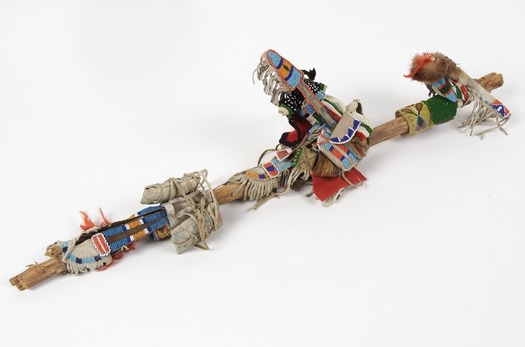
Traveling stick
Apsáalooke (Crow/Absaroke)
circa 1890
Montana; USA
- Wood, hide, wool cloth, feather/feathers, glass bead/beads
- Collected before 1927 by anthropologist William (Willem) Wildschut (1883-1955) during fieldwork sponsored by MAI.
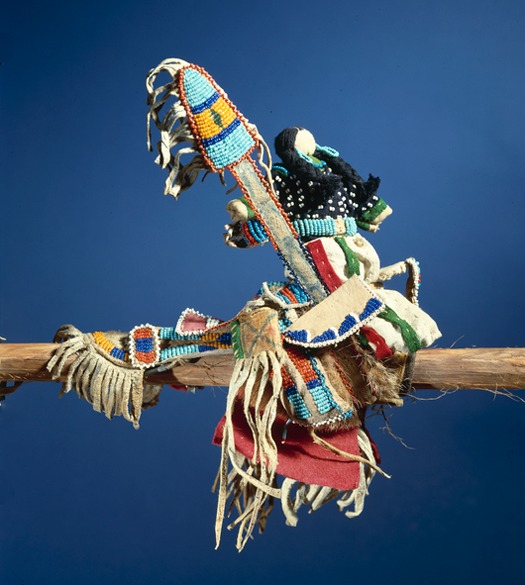
Detail of above
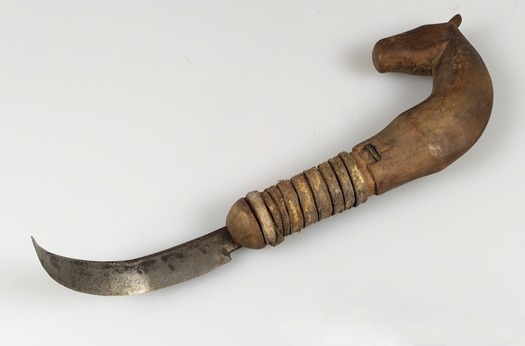
Crooked knife
Meskwaki (Fox) [Tama, Iowa]
circa 1900
- Sac and Fox Reservation (Mesquakie Indian Settlement); Tama County; Iowa; USA
Wood, iron blade, hide thong/babiche
- Formerly owned by George Young Bear (Meskwaki, 1898-1971); purchased from him by George G. Heye in 1929.
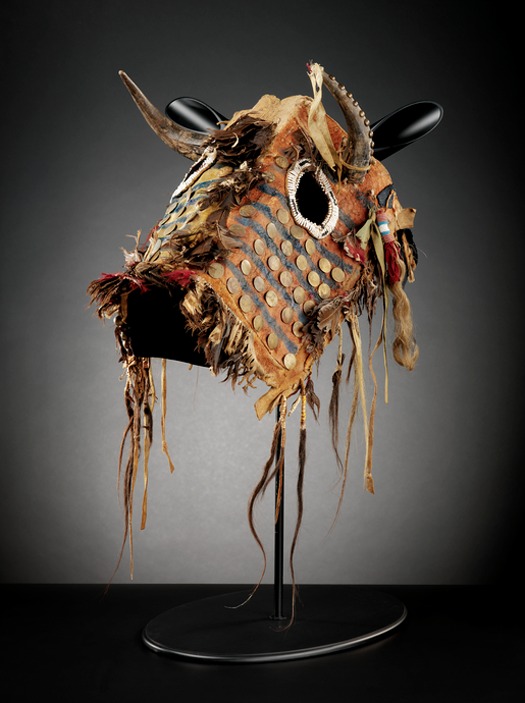
Horse mask
probably Siksika Blackfoot (attributed)
1830-1860
Alberta; Canada (inferred)
- Buffalo hide/skin, buffalo horn, glass bead/beads, glass pony beads, brass button/buttons, brass tacks/bosses, human hair, horsehair, porcupine quills, feather/feathers, silk ribbon, wool cloth, ermine skin/fur, cotton cloth, paint, sinew
- Collection history unknown; purchased by MAI from an unknown source in 1935.
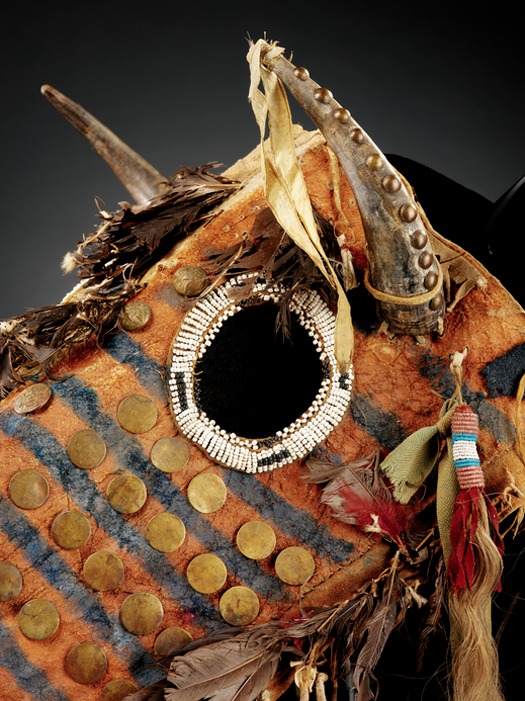
Detail of above
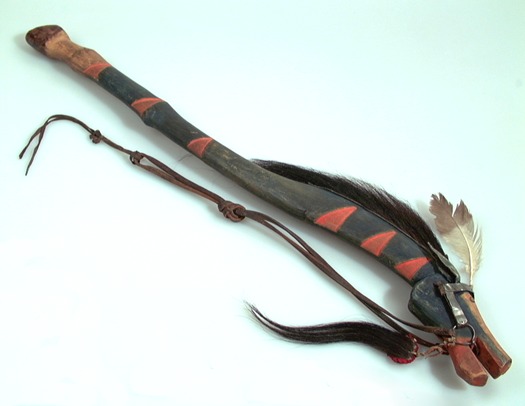
Dance club
Joseph No-Two-Horns (He Nupa Wanica/White Butterfly), Hunkpapa Lakota (Hunkpapa Sioux), 1852-1942
circa 1890
North Dakota; USA
- Wood, wool cloth, horsehair, commercially tanned leather, metal, metal ring, hide thong/babiche, eagle feather/feathers, iron nails, paint, sinew
- Formerly owned by Joseph No-Two-Horns (Hunkpapa Lakota); formerly in the collection of the State Historical Society of North Dakota; purchased by MAI in 1925.
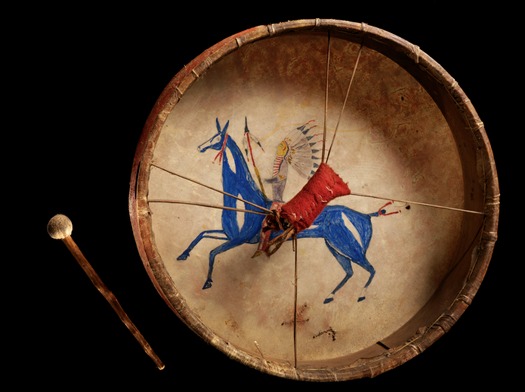
Hand drum
probably Lakota (Teton/Western Sioux) (attributed)
1860-1870
North Dakota or South Dakota; USA (inferred)
- Wood, hide, paint, iron nails, wool cloth, cotton cloth
- Collection history unknown; MAI purchase from an unknown source in 1921.
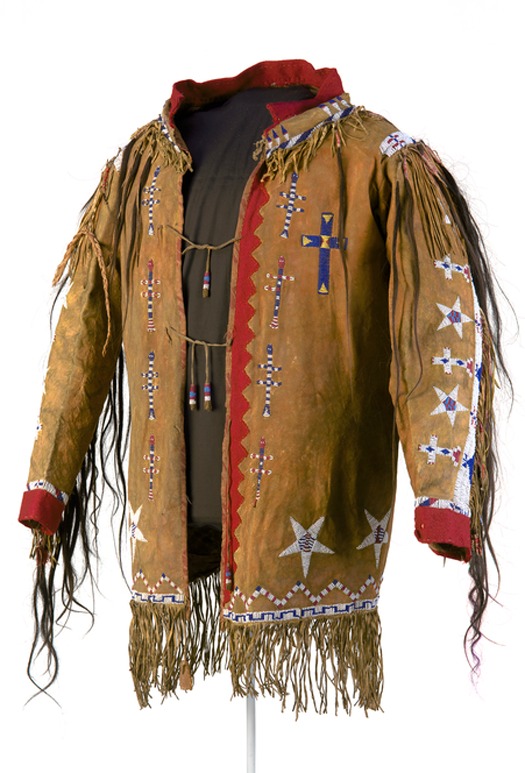
Man's coat
Chaticks Si Chaticks (Pawnee)
circa 1910
Oklahoma; USA
- Deerhide/deerskin, cotton cloth, wool cloth, glass bead/beads, horsehair, porcupine quills, sweetgrass, sinew, pigment/pigments, cow horn, feather/feathers, cotton thread
- Formerly owned by Lone Wolf (Pawnee, also known as Spotted Horse); acquired by William M. Fitzhugh (1853-1929, a San Francisco collector) at an unknown date; acquired by MAI in 1936.
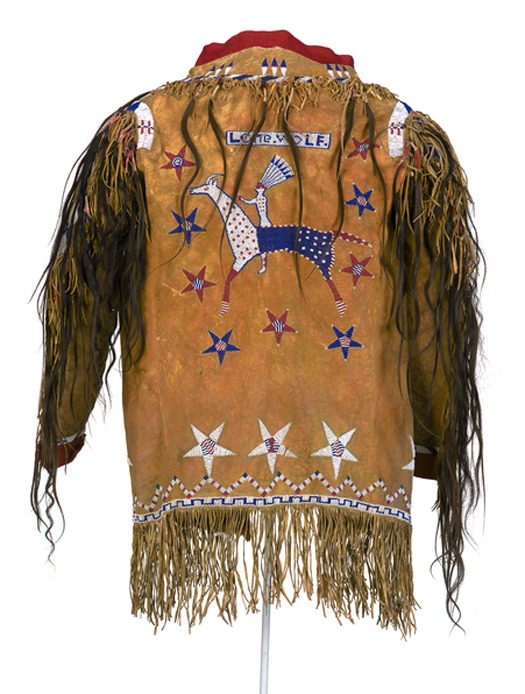
Detail of Man's coat, back view
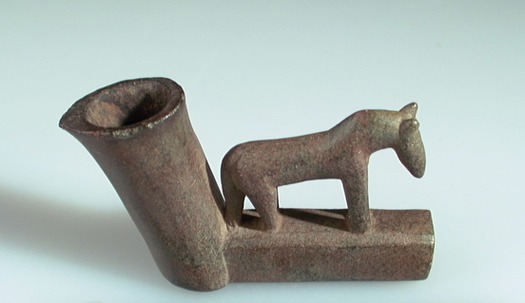
Pipe bowl with horse effigy
Eastern Band of Cherokee
1750-1800
North Carolina; USA
- Stone
- Collection history unknown; purchased by MAI from an unknown source in 1940.
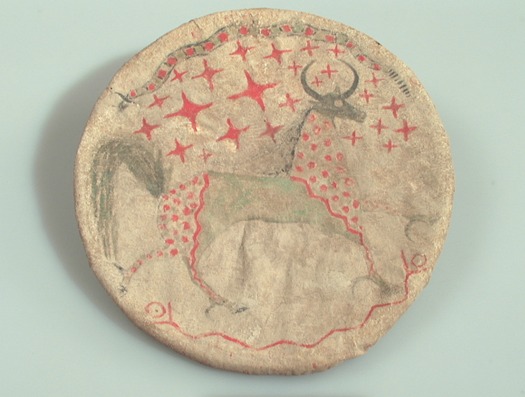
Dance shield
Hunkpapa Lakota (Hunkpapa Sioux)
circa 1870
North Dakota; USA
- Hide, wood, paint, twine/string
- Collection history unknown; purchased by MAI from an unknown source in 1949.
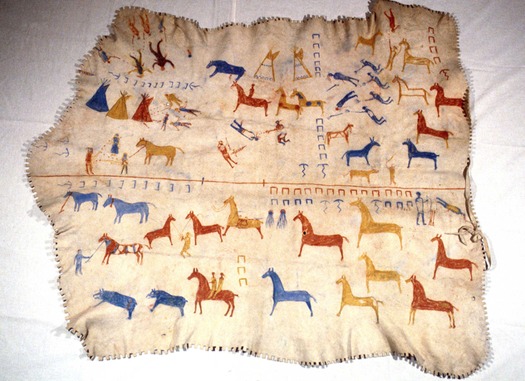
Robe
Mountain Chief (Nin-Na-Stoko/Ninastoko/Big Brave/Ni-ne st-ar-ko), Pikuni Blackfeet (Piegan), 1848-1942
1870-1910
Montana; USA
- Elk hide/skin, paint
- Formerly in the collection of Christian F. Schuster (1868-1957) and possibly collected by him when he lived with the Blackfeet in the 1920s; purchased by MAI from Christian Schuster in 1953.
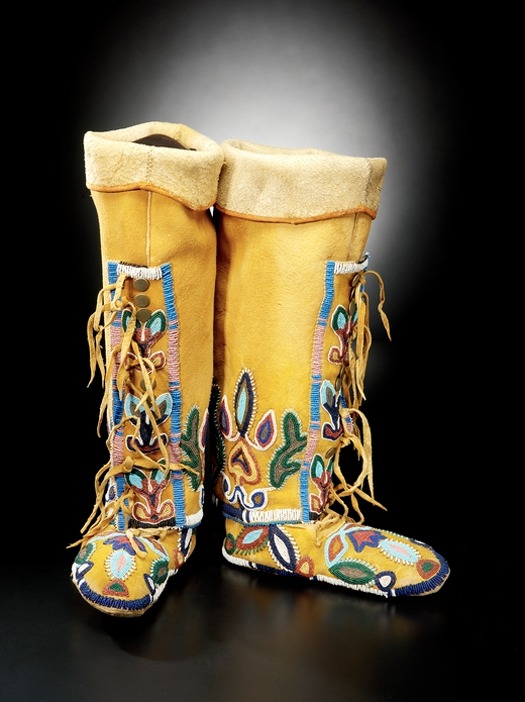
Woman's boots
Northern Shoshone
c. 1910
Idaho, USA
- Hide, glass bead/beads, metal bead/beads, brass button/buttons, rawhide, cotton cloth, sinew
- Probably collected by Colonel James F. Randlett (1832-1915, US Army commander and Indian agent at Fort Duchesne, Utah, until 1896 and Indian agent for the Kiowa, circa 1900); acquired by MAI between 1916 and 1923.
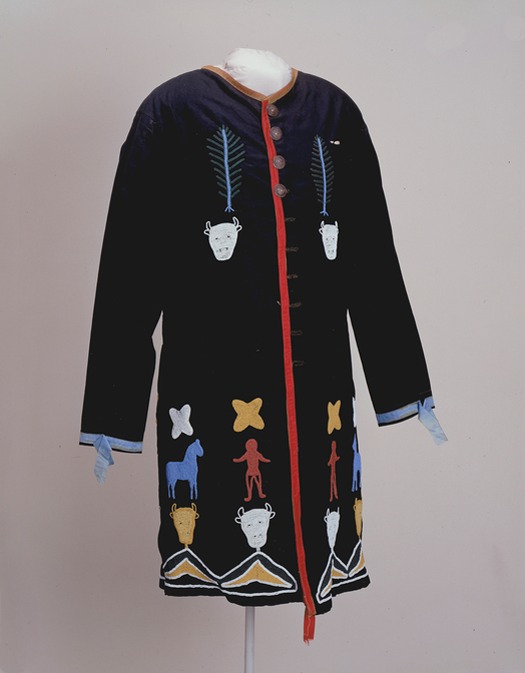
Man’s coat
possibly Oto (attributed)
circa 1895
-Wool cloth, cotton cloth, glass bead/beads, coin/coins, silk ribbon, hide thong/babiche, cotton thread
- Collected by Mark Raymond Harrington (1882-1971, MAI staff member) in 1909 during fieldwork sponsored by George Heye.
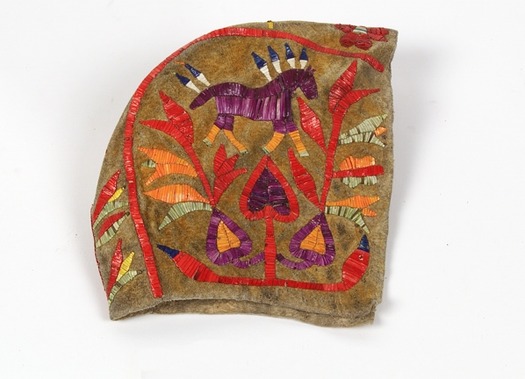
Baby’s cap
probably Lakota (Teton/Western Sioux) (attributed)
circa 1900
- Hide, porcupine quills, dye/dyes, sinew
- Collection history unknown; formerly in the collection of John J. Steffen (1855-ca. 1930, druggist in Douglas, Wyoming); purchased by George Heye in 1907.
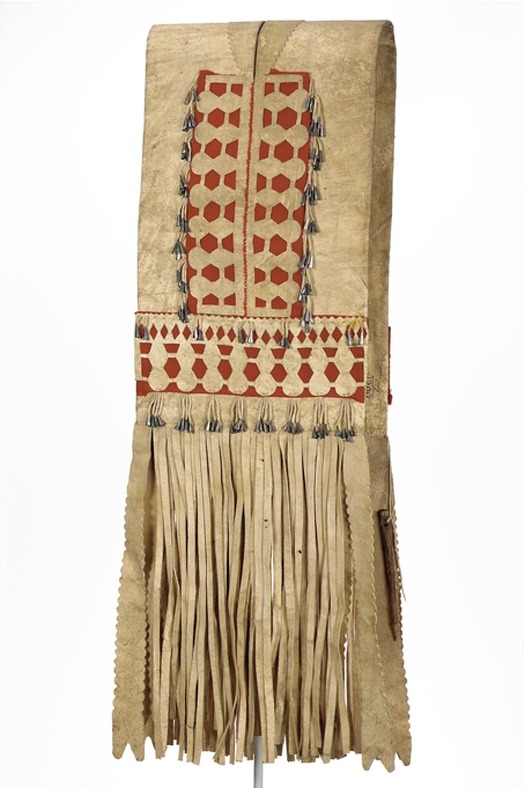
Saddlebag
Chiricahua Apache
1880-1890
- Hide, wool cloth, metal cones
- Collected by Mark Raymond Harrington (1882-1971, MAI staff member) in 1908 or 1909 during fieldwork sponsored by George Heye.
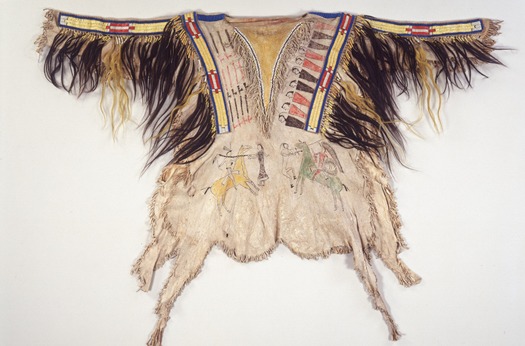
Man's shirt
Northern Tsitsistas/Suhtai (Cheyenne)
circa 1860
- Hide, porcupine quills, glass pony beads, human hair, horsehair, sinew, tree pitch/gum, paint
- Collected between 1855 and 1861 at Fort Laramie, Wyoming, by Thomas S. Twiss (ca. 1802-1871, U.S. Indian agent for the upper Platte River); probably transferred at an unknown date to Daisy Barnett; purchased by MAI in 1918 using funds donated by MAI trustee Harmon W. Hendricks (1846-1928).
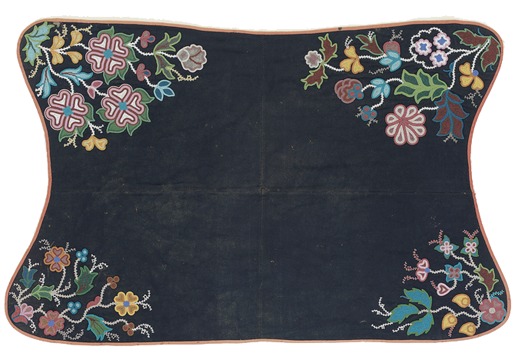
Saddle blanket
probably Plains Cree (Prairie Cree) (attributed)
- Wool cloth, glass bead/beads, cotton cloth, cotton thread, cotton tape
- Collection history unknown; formerly in the collection of E.M. Shallcross; purchased by MAI in 1922 using funds donated by Mrs. George (Thea) Heye.
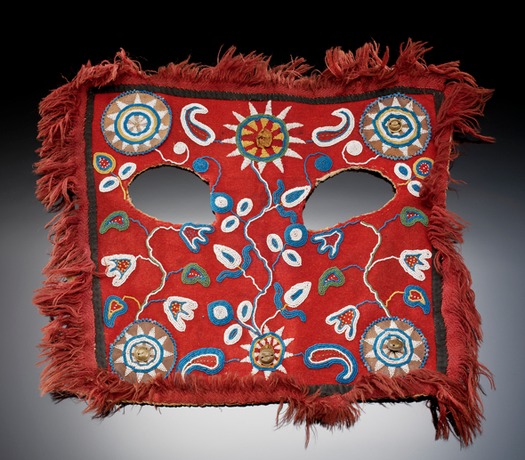
Horse mask
Nimi'ipuu (Nez Perce)
circa 1865
- Sewn, overlay beadwork, lazy/lane stitch beadwork, fringed
- Collection history unknown; purchased by MAI from an unknown source in 1919.
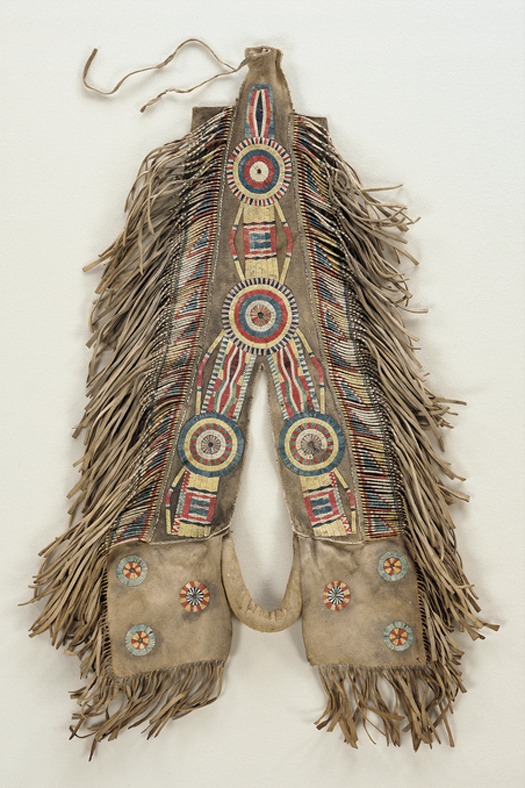
Crupper (keeps a saddle from sliding forward)
probably Red River Metis (attributed)
circa 1850
- Sewn, dyed, quilled (lane stitched), quill-wrapped (flat), stuffed
- Collection history unknown; formerly in the collection of the Horniman Museum (London, England); acquired by MAI in 1933 through an exchange with the Horniman Museum.
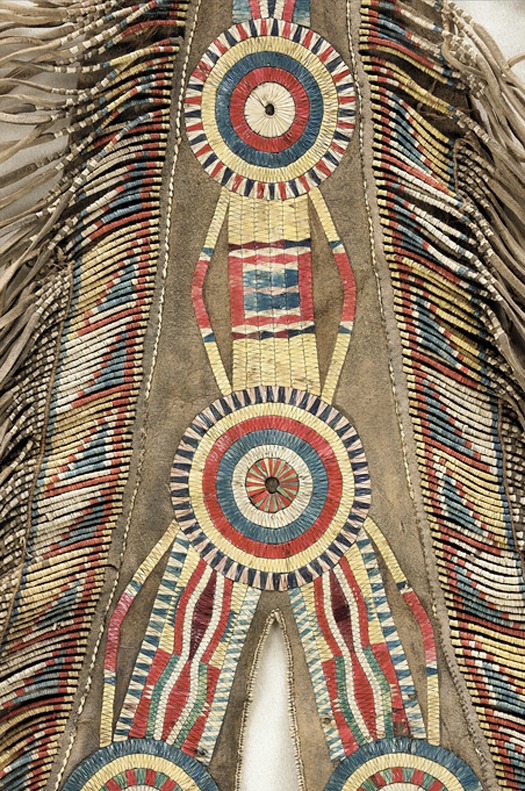
Detail of crupper
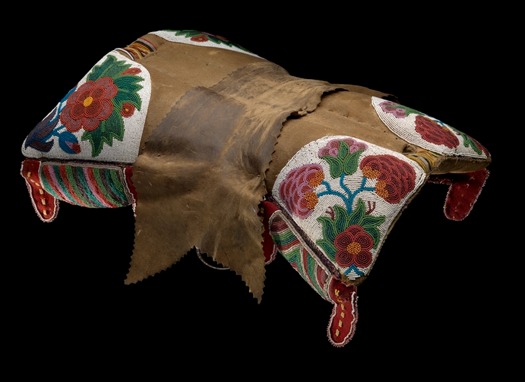
Pad saddle
probably Plains Cree (Prairie Cree) (attributed); owned and used by the Tsuu T'ina (Sarcee)
circa 1895
- Hide, wool cloth, glass bead/beads, deer hair, cotton cloth, silk ribbon, hide thong/babiche, metal buckle, sinew, thread, rawhide
- Given to Jean Mary Cowan (Mrs. Leonard West/Mrs. Robert Isbister, 1912-1998) in 1916 or 1917 by Tsuu T'ina (Sarcee) friends from a reserve near the ranch where she lived with her parents, Cecil M. Cowan and Constance Cowan (1881-1963); kept by Cowan family until 1943, when it was donated to MAI by Mrs. Cowan.
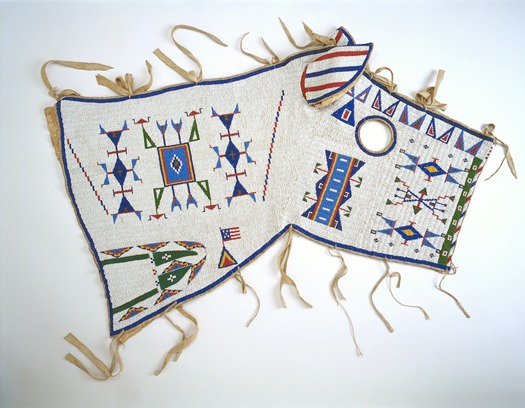
Horse mask
Oglala Lakota (Oglala Sioux)
circa 1900
- Hide, glass bead/beads, cotton cloth
-Said to have been used by the chief of the Teton Sioux to lead a parade at Pine Ridge Agency, July 4th, 1904; collected by J.W. Good (possibly James W. Good, 1866-1928, Iowa congressman); at that time and acquired by George Heye the same year.
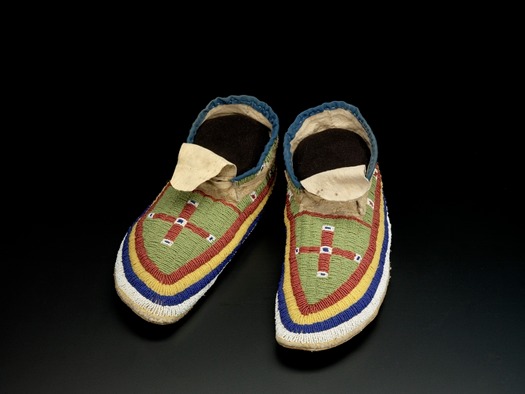
Man’s moccasins
probably Lakota (Teton/Western Sioux) (attributed)
circa 1880
- Hide, glass bead/beads, rawhide, paint, cotton cloth, sinew, thread
- Collection history unknown; formerly in the collection of Joseph W. Keppler (1872-1956, long-time friend of George Heye); acquired by Heye in 1906.
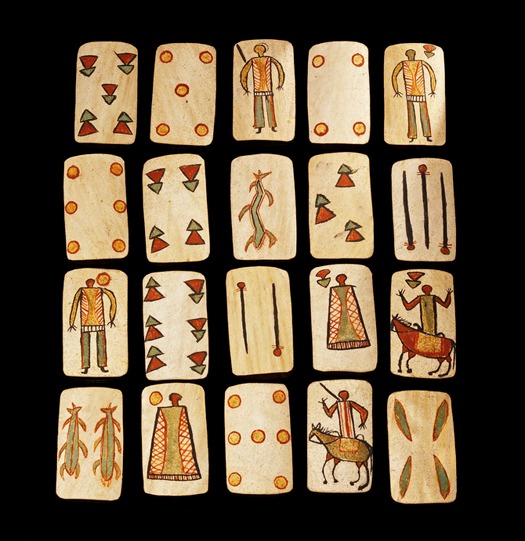
Deck of 37 Playing cards
Chiricahua or Western Apache (attributed)
1875-1885
- Rawhide, paint
- Collection history unknown; MAI purchase from an unknown source in 1917.


Comments [3]
Anybody knows anything about it?
Thank you
Antonella
01.22.14
10:15
02.06.14
01:06
02.06.14
01:06